Loon Update and Fall Reminders
2023, No. 11 — October 3
Loon Update
It seems that our male has left for the ocean, but our female and Paisley are still around.

The youngster is always hungry and constantly lets mom know!

But that means she will reach her full growth and will be ready to leave for the ocean in great shape.
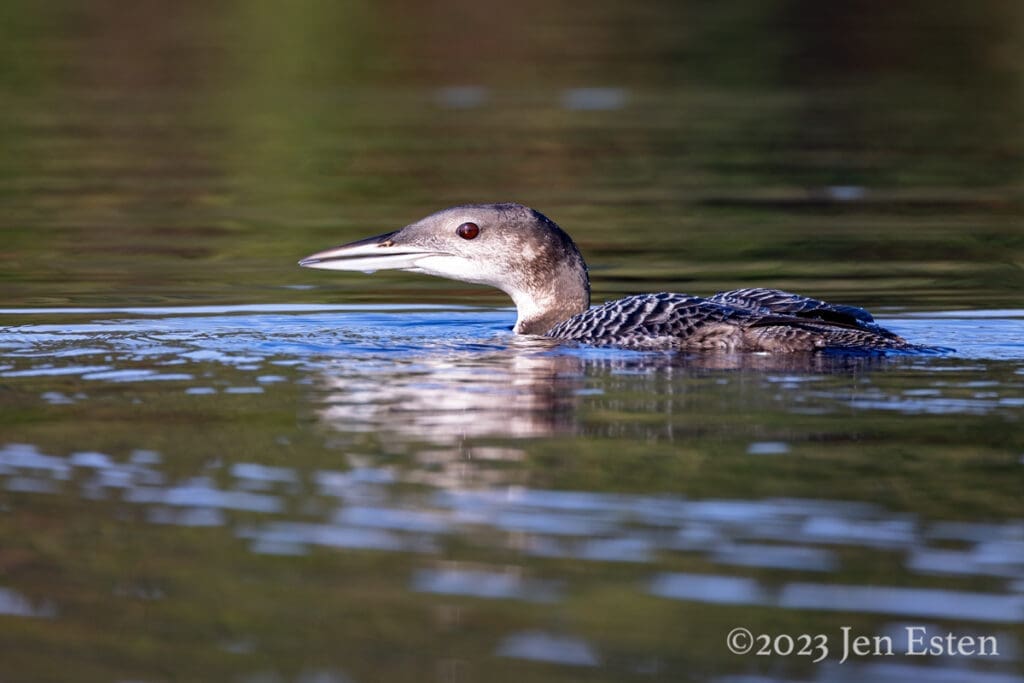
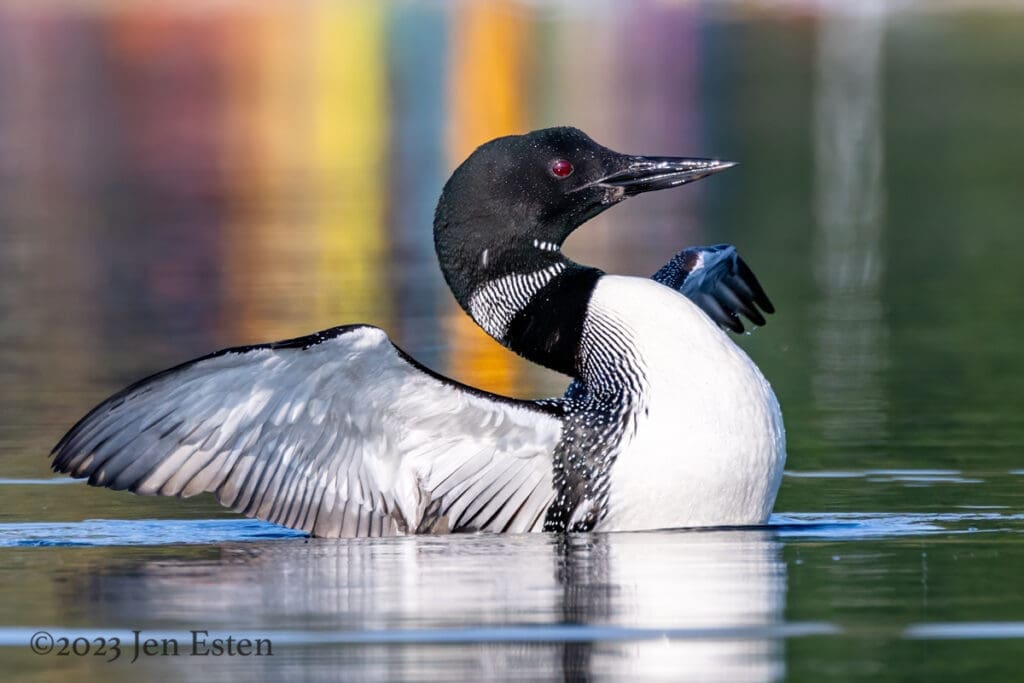
A proud mother loon! (colors are reflections from kayaks on shore)
Our female was the subject of a recent post on the Loon Preservation Committee Facebook site. She is a New Hampshire Rock Star …
Turning to the Fall
There are hints around the Lake that Fall colors are emerging.
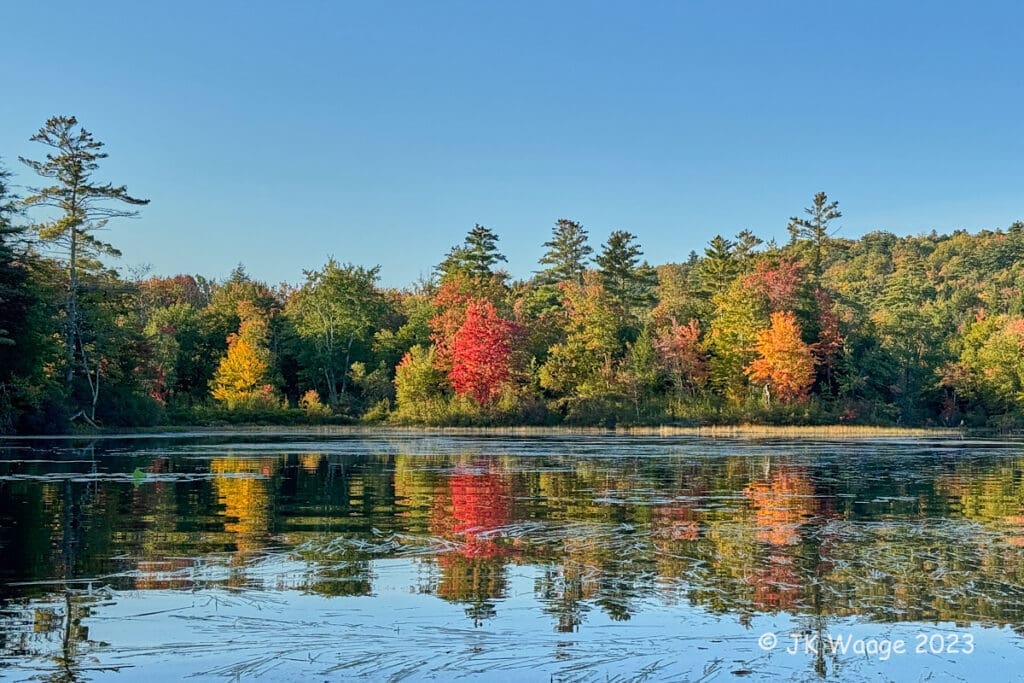
Migrating birds have been working their way South for several weeks now. Early signs are white feathers floating on the water, thanks to flocks of Canada Geese preening while resting a day or two on the Lake.

Fall warblers have been showing up all around the watershed.
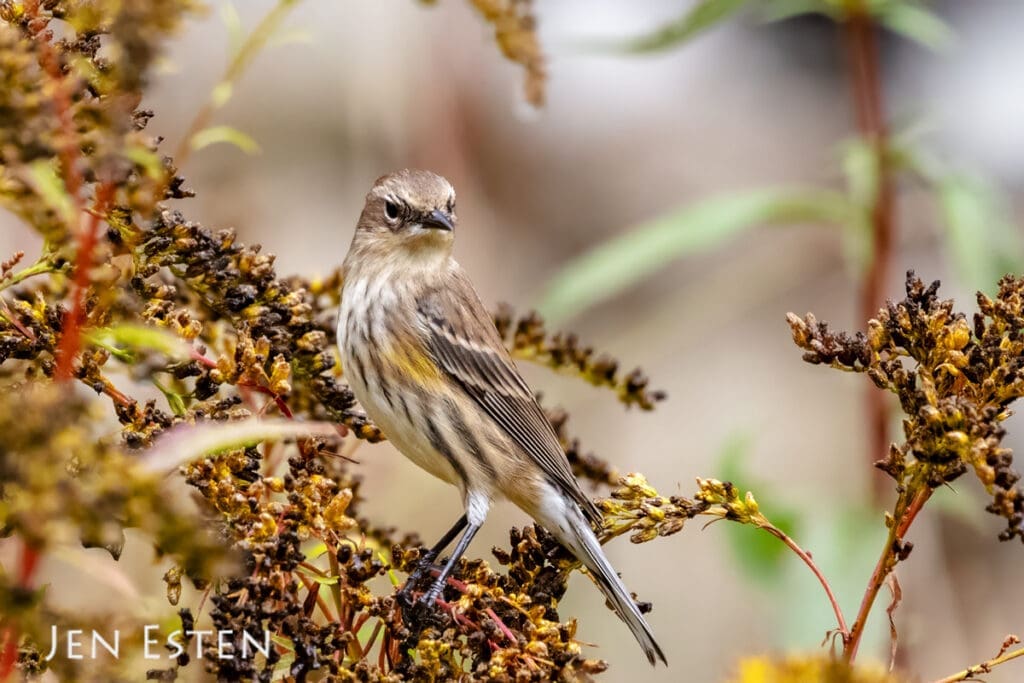
Yellow-rumped Warbler
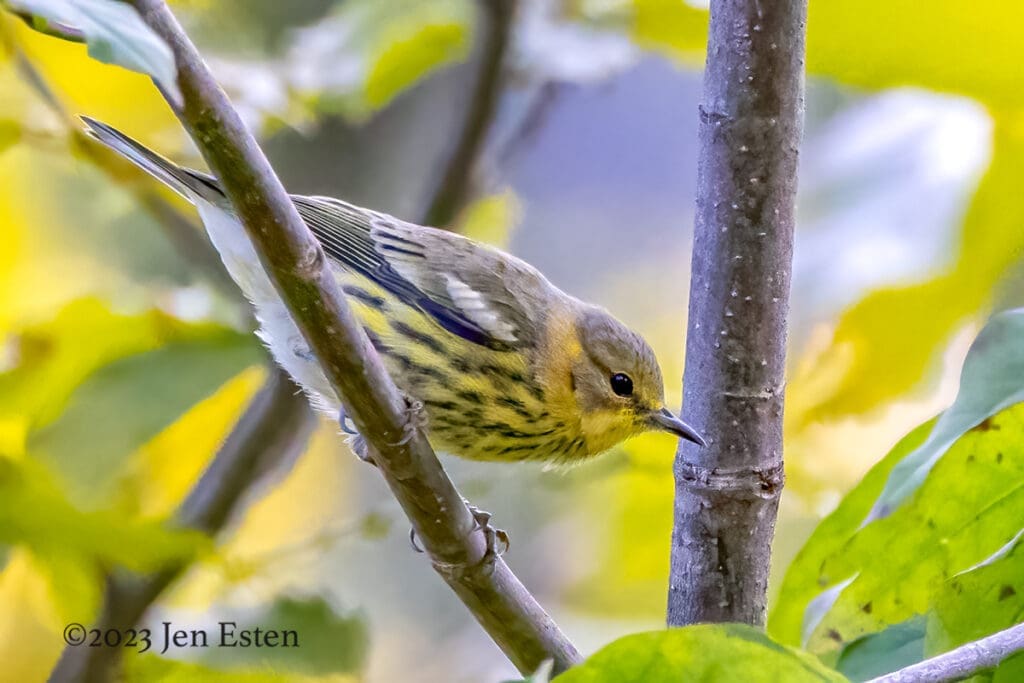
Cape May Warbler
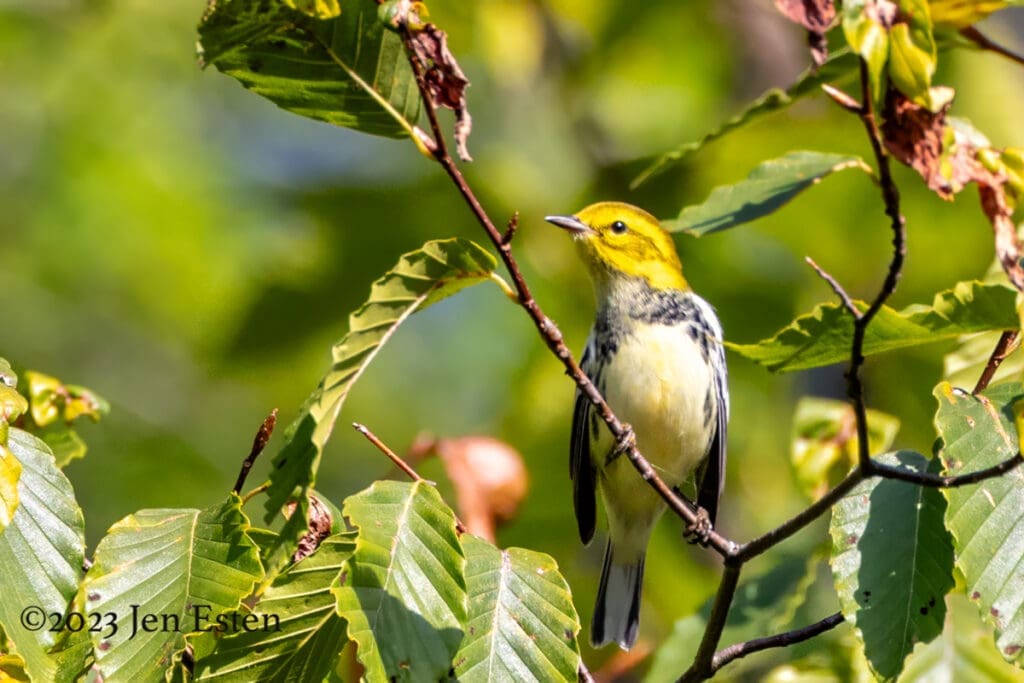
Black-throated Green Warbler
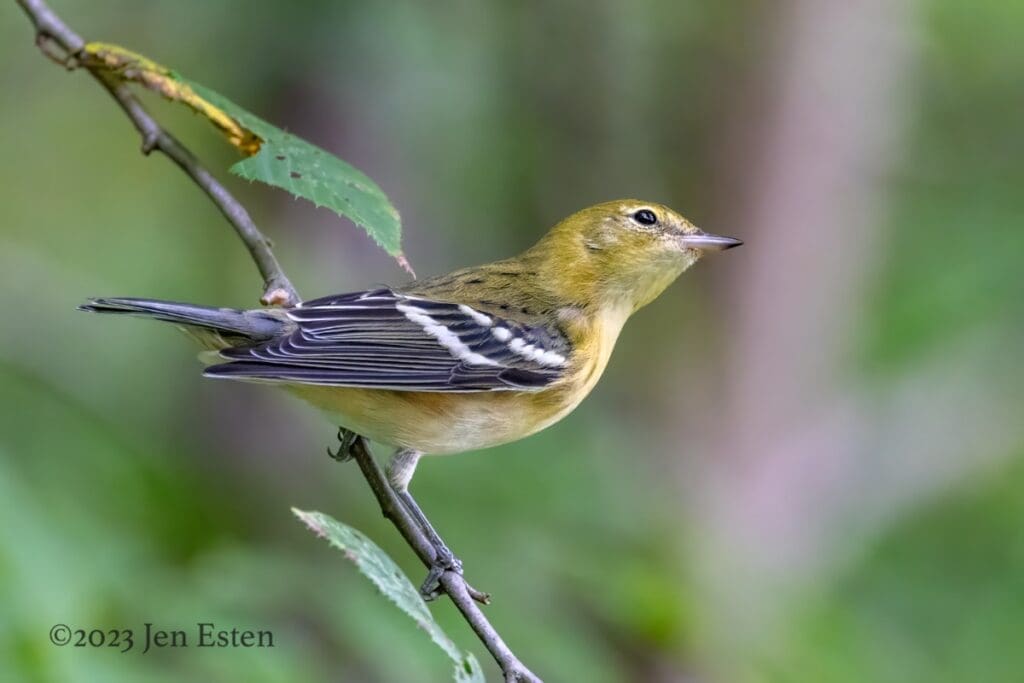
Bay-breasted Warbler
Always a Fall favorite, Witch Hazel is in bloom.
Perhaps the last flower of the year, its flowers are pollinated by several late season insects including small flies and moths.
In North America, Witch Hazel has been used for many centuries in ointments and teas for its anti-inflammatory and other healing properties. Certainly coming upon a blooming Witch Hazel after the summer color has left the woods has a healing effect.
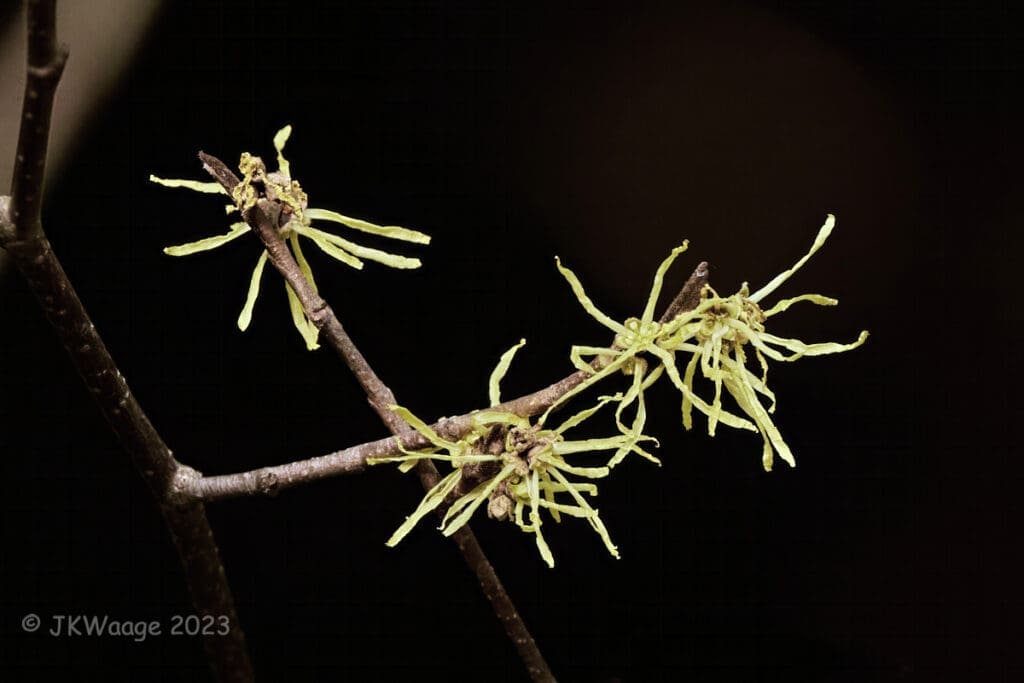
Witch Hazel fruits are present with the flowers, but they are from last year’s blooms. As each fruit dries out next year, its hard shell contracts and, with a bang, a pair of seeds are propelled several meters through the air.
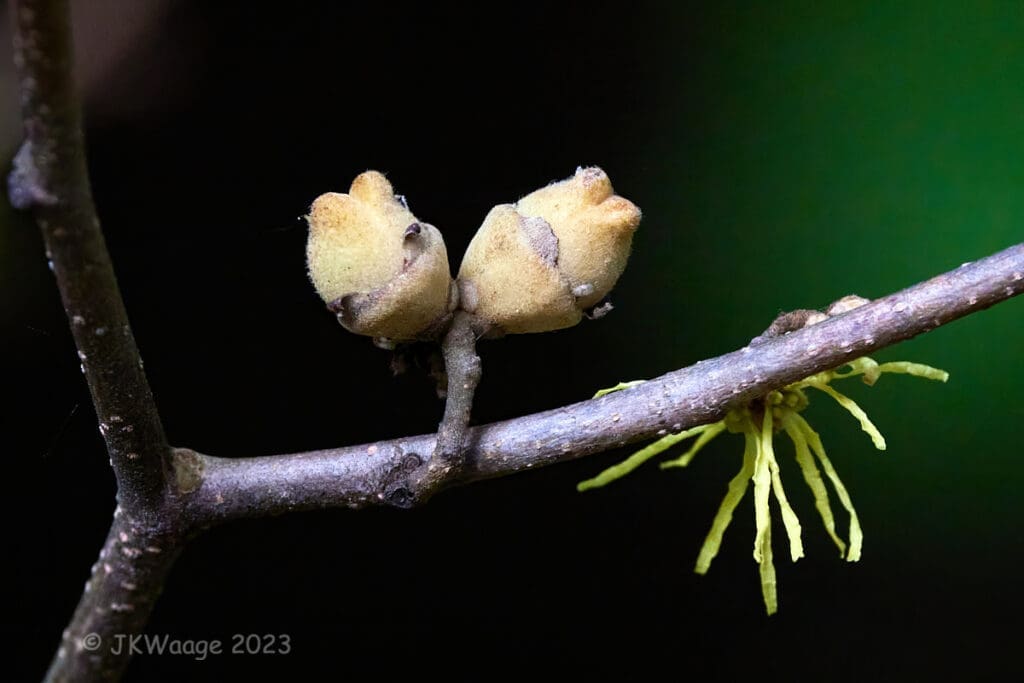
Leaves Belong in Woods, not Lakes
Both deciduous and coniferous trees depend on recycling their dead leaves and branches to provide nutrients needed to make new ones and grow up and out into the sunlight.

Fallen leaves also provide essential shelter for overwintering animals like the Red-backed Salamander and Red Eft below. Remember that toads and several frogs (e.g. Gray Tree Frogs) also overwinter on land and depend on a layer of litter for protection.
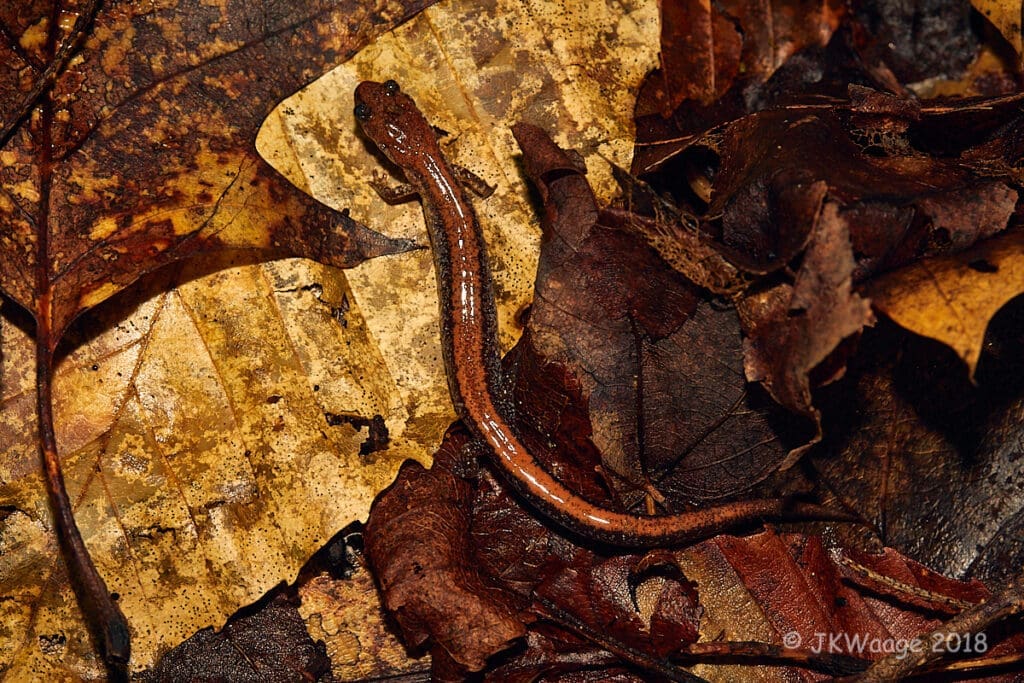

Most insects go through the winter in a resting stage (egg, nymph, pupa or adult) and rely on the protective cover of leaf litter. Wooly Bear (Isabella tiger moth) caterpillars are among them. Interestingly, the extent of the reddish brown color on a Wooly Bear probably tells us more about how long the Spring and Summer growing season was (more red = more growing days) than how bad the Winter will be.
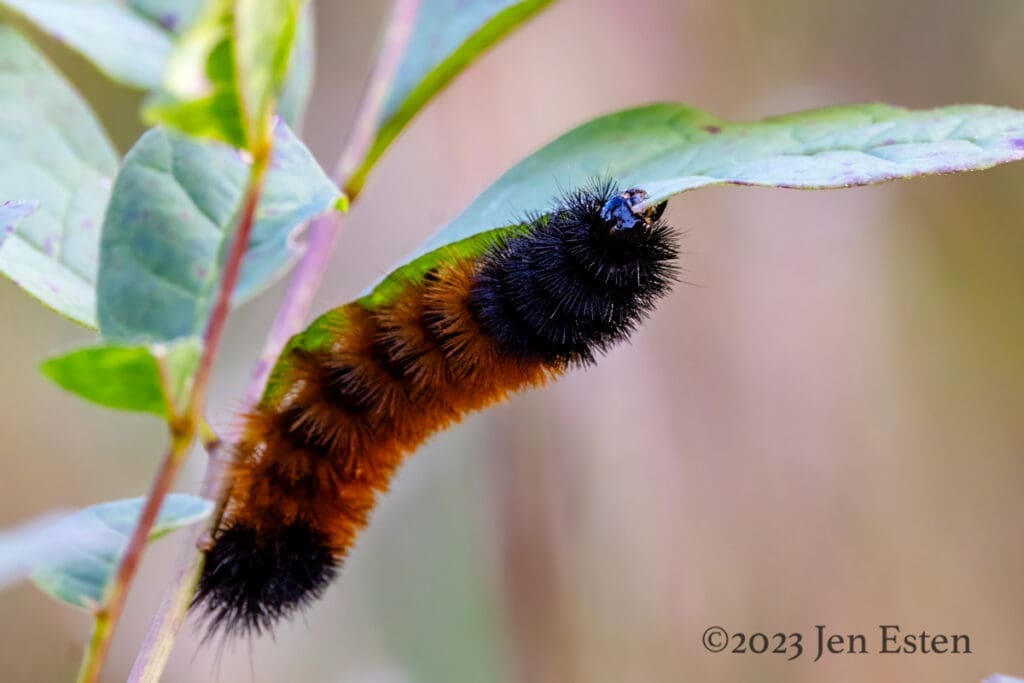
Mated Wasp and Bumble Bee queens overwinter as adults and will lay eggs in the Spring using stored sperm. They too depend on a layer of leaf litter and other dead vegetation for protection during the winter.
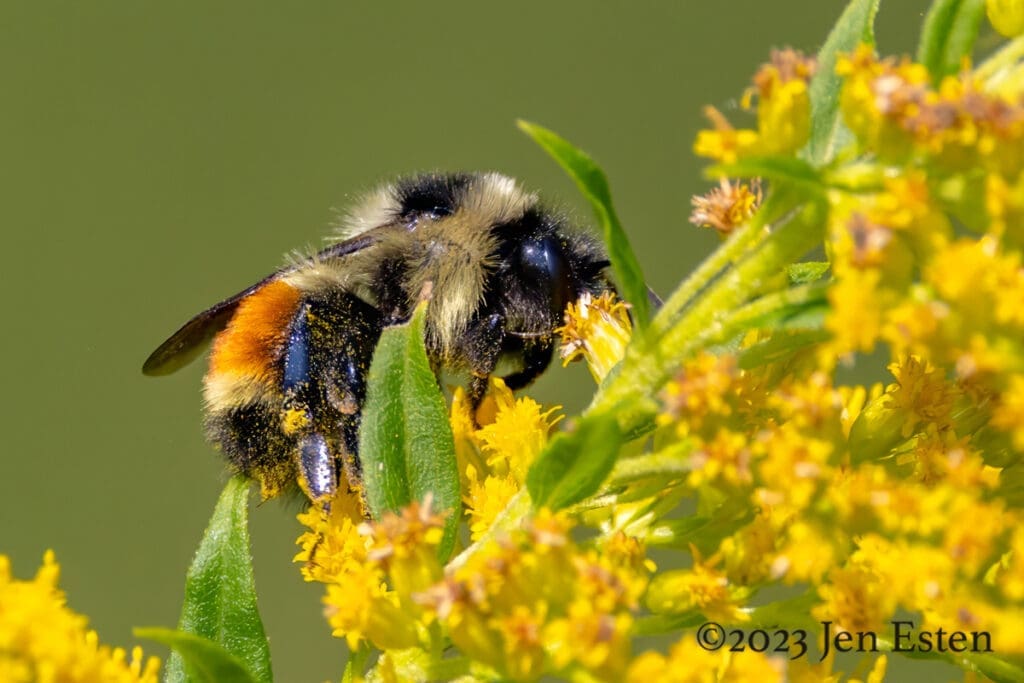
Clearly removing leaves in the fall is not going to help either the plants or animals that depend upon them. In addition, the way in which leaves removed from yards are disposed of can cause even more harm. Burning releases carbon dioxide and leaves behind only a fraction of the organic material. Throwing them in wet areas (including lakes, swamps and streams) just adds extra nutrients to those areas which are not needed and potentially harmful.
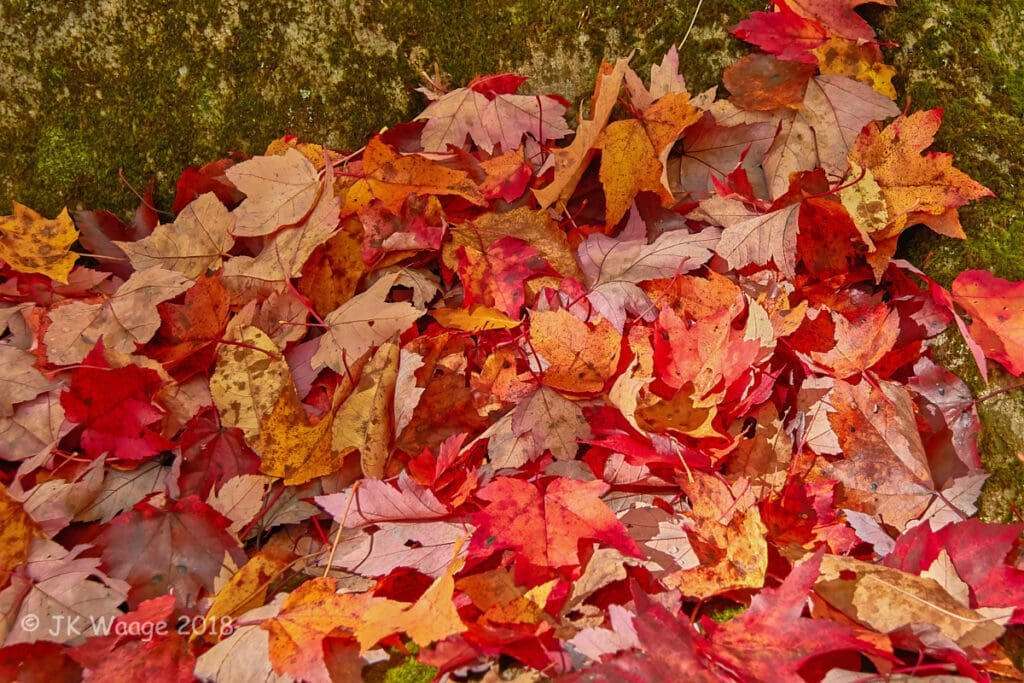
We urge landowners to:
- not rake or dispose of leaves into lakes, streams or wetlands.
- not disturb or remove leaves that fall in the woods
- consider using leaves removed from your yard by spreading (not piling) them into adjoining woods or shrubs or by using them as compost.
The result will be beneficial to your plants and overwintering animals and the decomposing leaves will act as a slow release fertilizer that won’t run off into the Lake when it rains.
For more information on how best to manage Fall leaves for the environment, here is a link to the New Hampshire DES pointing out that it is not legal to add leaves or yard waste to wet areas (including streams and Lakes) and recommending alternatives. The following helpful article from The University of Delaware on leaf recycling includes ways to use leaves as compost and for enriching lawns, flower beds and garden soil.
Please do not blow or rake leaves into Pleasant Lake!
Bye for now… Jon and Jen
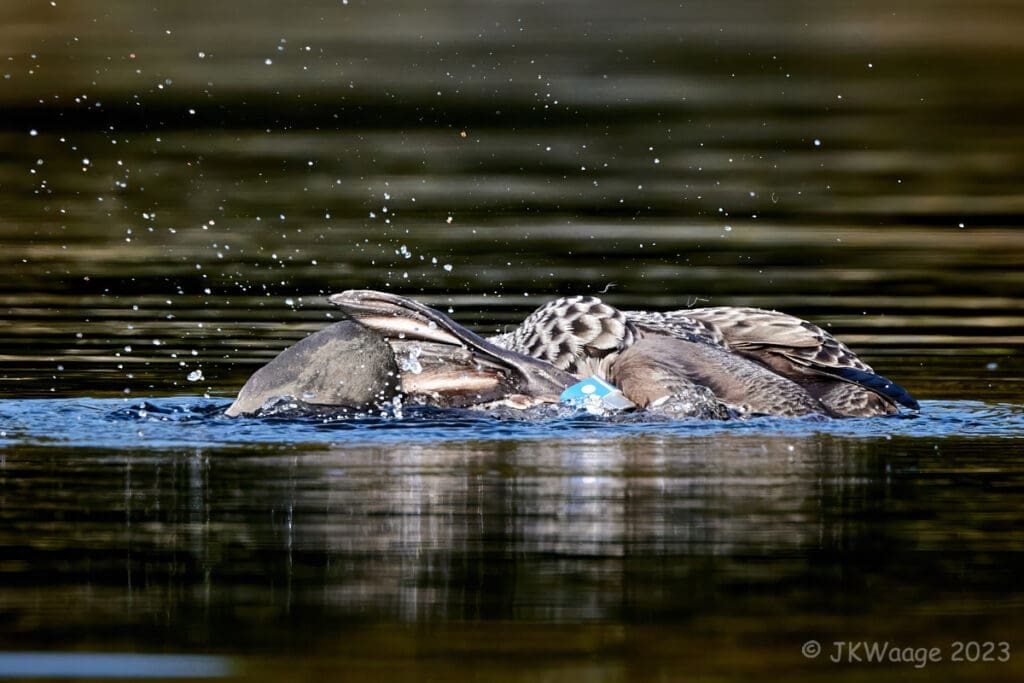
(Foot waves are rare now. This is Paisley scratching her head)
